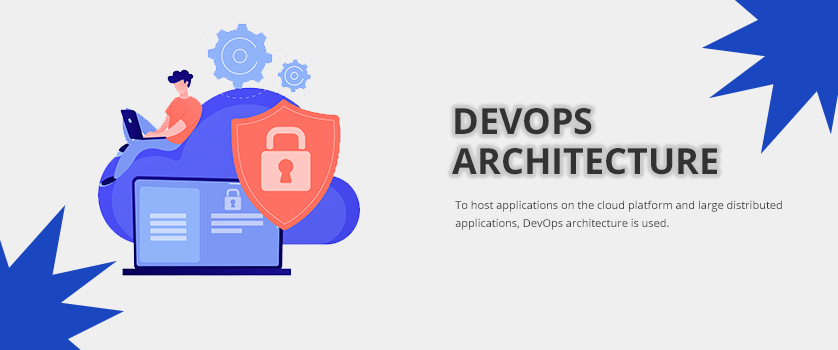


To host applications on the cloud platform and large distributed applications, DevOps architecture is used. Well, that’s the standard definition, but we’ll tell you how it works.
Hosting an application on the cloud means, the source code, work items, build configuration, and team features all are hosted in the cloud, and to access all this just an internet connection is needed.
Once the DevOps server setup is complete, all services can be accessed using a single account. And without worrying about the cost and accessibility, you can create projects, and add members to your team.
While managing or scaling a self-hosted server needs a huge cost and seems impractical sometimes, DevOps services host your application easily and don’t charge much, all you need is a DevOps Architect to define the various phases of DevOps Architecture.
Development: It’s a kind of server where the project gets completed using various tools. Once the project gets completed, it is sent for testing to the testing server. In some scenarios, the development phase is also used for testing purposes like debugging.
Testing: It also acts as a server where developed projects are tested. To test a project a set of pre-written test cases are used. However, the testing can be automated or manual.
Staging: It handles all the projects that have passed the test case, the project configuration, and the acceptance testing accepted by the client. If the customer accepts the project, it is deployed else further changes are made based on the instructions provided by the client.
Production: This server is used for production purposes. Once the project is accepted by the customer, or it passes all the tests, the final product is released into the market.
During the DevOps lifecycle, a range of tools is also used that make the software development process agile.
Here is a list of cloud platforms that help to form DevOps Architecture:
There are various platforms available to host applications on cloud platforms, yet Azure DevOps architecture and AWS DevOps architecture are preferred by most of the organizations.
If a company is switching from a traditional environment to DevOps architecture then it should have the right personnel in the team that includes:
Cost-Effective: Every business aims to reduce the operational cost, and DevOps does exactly the same. As compared to traditional application building, it not only improves the performance but also brings down the cost.
Better Productivity: Due to increased competition, every development team wishes to build, test, and deploy the application faster. Since DevOps has shorter development cycles and enhances productivity, applications are deployed in no time.
Customer Satisfaction: Getting user feedback and working on it helps DevOps teams to take customer satisfaction to another level.
At each front, DevOps architecture acts as the backbone of the organization. Be it improving collaboration between many teams, developing the finest product, or helping an organization to scale business operations at ease, it handles everything.